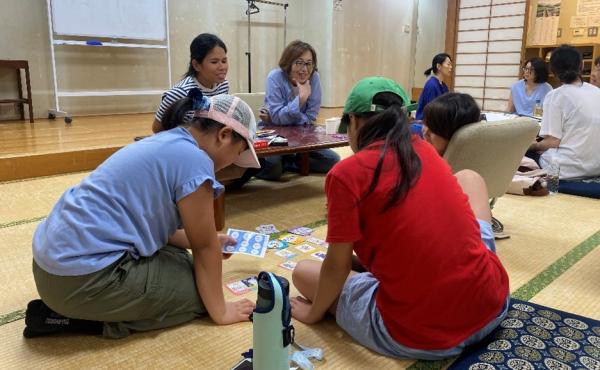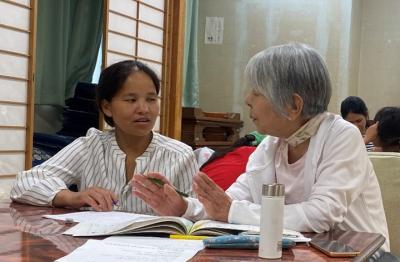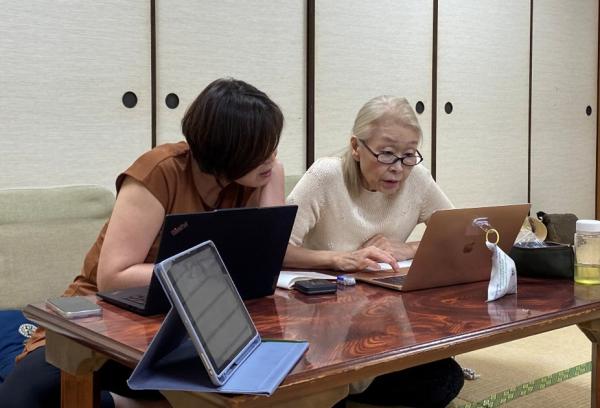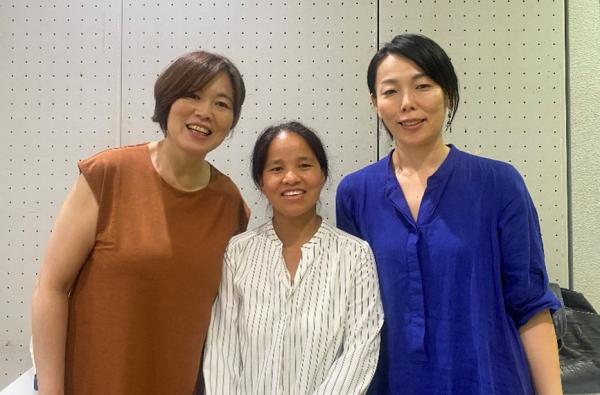Community "Nihongo Kyoshitsu" Activities Report, vol.15
The regional Japanese language education coordinators of the Tokyo Metropolitan Foundation "TSUNAGARI" are visiting Japanese classes in Tokyo and introducing them in the Community "Nihongo Kyoshitsu" Activities Report.
In our fifteenth report, we are introducing Nihongo-shien in Komae City!
About Komae City
Komae City is located at the southeastern edge of the Tama Hills along the Tama River in Tokyo, bordering Kawasaki City in Kanagawa Prefecture across the Tama River. With an area of 6.39 km², it is the second smallest city in Japan.
While it only takes 20 minutes by train to get to Shinjuku Station from Komae Station in the city center, Komae City is home to many ancient burial mounds, and the Tama River area offers rich natural scenery throughout the four seasons.
Population (as of August 1st, 2025): 82,253
Foreign population: 1,822
About Nihongo-shien (Japanese support)
NPO Komae Nihongo-shien's Nihongo Salon has been featured in the Community “Nihongo Kyoshitsu” Activities Report before.
https://tabunka.tokyo-tsunagari.or.jp/english/log/topics/2023/04/vol7.html
While our previous coverage focused on support for children, this time we would like to introduce how they support not only children but also adults such as parents and guardians.
The Nihongo Salon is held on the first, second, and third Saturdays at the Nishikawara Community Center, bringing together both adults and children.
For children, the focus is not so much on academic support or Japanese language instruction, but rather on interaction and providing a comfortable gathering place. On the day we visited, the children were playing card games.

The regular meeting room was unavailable that day, so the session was held in a traditional Japanese-style tatami room. While the tatami room had some inconveniences, such as having to remove shoes, the way the children naturally gathered close together to concentrate on their games and sat on the tatami mats chatting with each other made it look as if they were relaxing at home.
Meanwhile, the children's parents were going through school handouts one by one with supporters, checking the content together. The handouts appeared to contain information about school events that their children would participate in. They were not only checking unfamiliar words but also confirming what kind of events these were using Easy Japanese.


Additionally, there was a supporter who was connecting online to play games in Japanese with a child who had moved from Komae City to outside Tokyo. They were having a great time with games using tongue twisters.

Nihongo-shien's Activities

From right to left: Representative Higaki-san, Darami-san who is studying Japanese at the Nihongo Salon, and supporter Ota-san.
In addition to the Nihongo Salon we covered, Nihongo-shien provides a wide range of support, including: after-school support for elementary and junior high school students, translation of school handouts and materials into Easy Japanese, translation from Japanese into native languages, interpretation, and hosting events focused on Japanese language learning and cultural exchange. We learned that activities that began with Japanese language support for children naturally expanded to include support for parents and guardians.
Among the supporters are people responsible for creating the organization's website and university professors specializing in Japanese language education. The organization's wide range of support is made possible by the diverse and talented supporters who have gathered through the network that the current representative Higaki-san has actively expanded.
Thoughts on our visit…
When Higaki-san and others invited a child to join the card game, the child declined and sat alone in a corner of the tatami room reading manga.
The Nishikawara Community Center, where the Nihongo Salon is held, has a library next door. I thought that perhaps this child had deliberately borrowed the manga from the library before coming to the Nihongo Salon. The fact that such freedom is allowed makes it a place where children can come casually.
Having a nearby place that is welcoming to both adults and children, and where people can easily consult when they have problems, must be incredibly reassuring. We look forward to continuing to follow the activities of Nihongo-shien.
by AS
